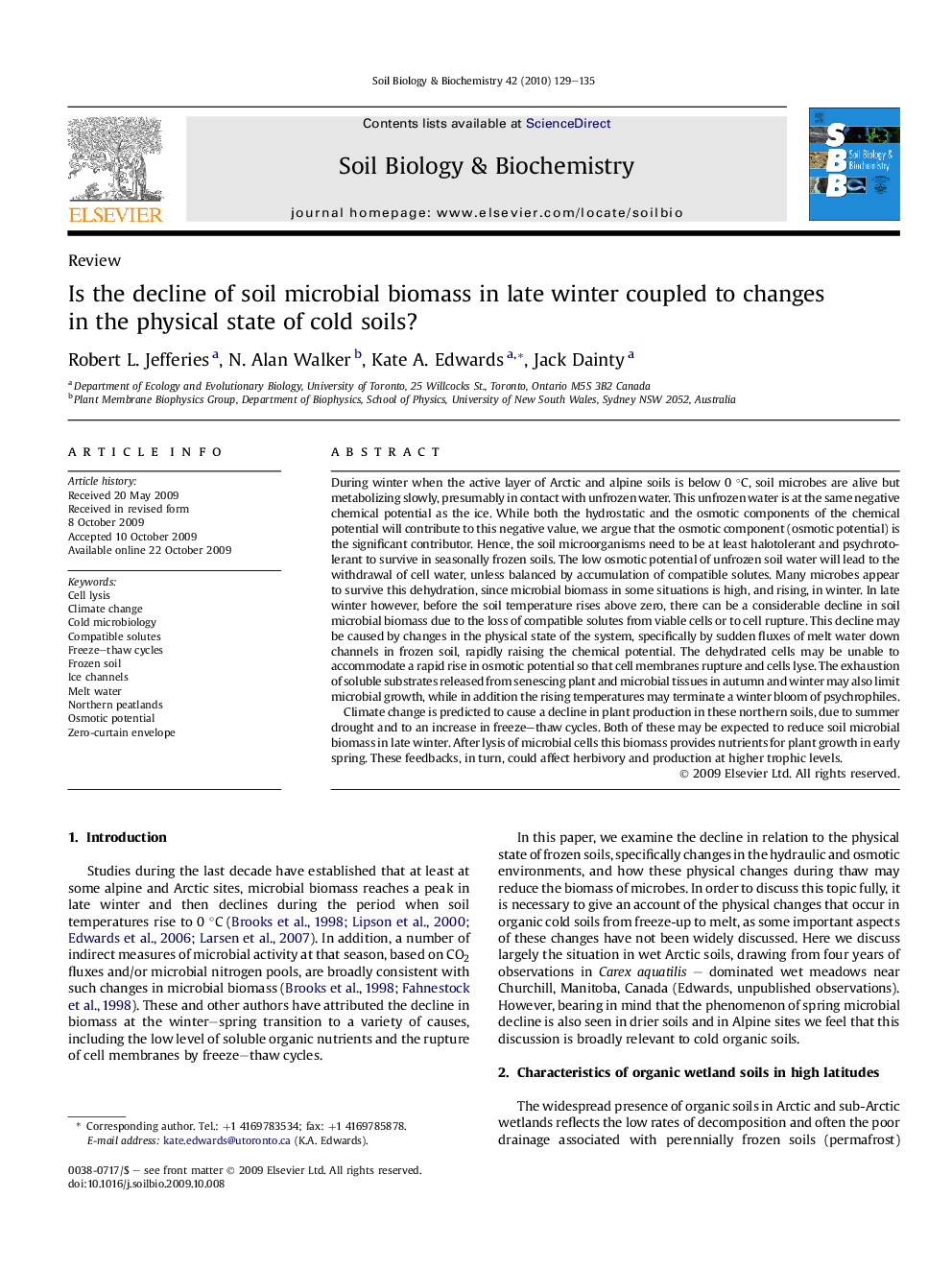| کد مقاله | کد نشریه | سال انتشار | مقاله انگلیسی | نسخه تمام متن |
|---|---|---|---|---|
| 2025119 | 1069982 | 2010 | 7 صفحه PDF | دانلود رایگان |

During winter when the active layer of Arctic and alpine soils is below 0 °C, soil microbes are alive but metabolizing slowly, presumably in contact with unfrozen water. This unfrozen water is at the same negative chemical potential as the ice. While both the hydrostatic and the osmotic components of the chemical potential will contribute to this negative value, we argue that the osmotic component (osmotic potential) is the significant contributor. Hence, the soil microorganisms need to be at least halotolerant and psychrotolerant to survive in seasonally frozen soils. The low osmotic potential of unfrozen soil water will lead to the withdrawal of cell water, unless balanced by accumulation of compatible solutes. Many microbes appear to survive this dehydration, since microbial biomass in some situations is high, and rising, in winter. In late winter however, before the soil temperature rises above zero, there can be a considerable decline in soil microbial biomass due to the loss of compatible solutes from viable cells or to cell rupture. This decline may be caused by changes in the physical state of the system, specifically by sudden fluxes of melt water down channels in frozen soil, rapidly raising the chemical potential. The dehydrated cells may be unable to accommodate a rapid rise in osmotic potential so that cell membranes rupture and cells lyse. The exhaustion of soluble substrates released from senescing plant and microbial tissues in autumn and winter may also limit microbial growth, while in addition the rising temperatures may terminate a winter bloom of psychrophiles.Climate change is predicted to cause a decline in plant production in these northern soils, due to summer drought and to an increase in freeze–thaw cycles. Both of these may be expected to reduce soil microbial biomass in late winter. After lysis of microbial cells this biomass provides nutrients for plant growth in early spring. These feedbacks, in turn, could affect herbivory and production at higher trophic levels.
Journal: Soil Biology and Biochemistry - Volume 42, Issue 2, February 2010, Pages 129–135